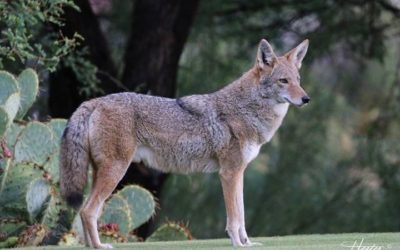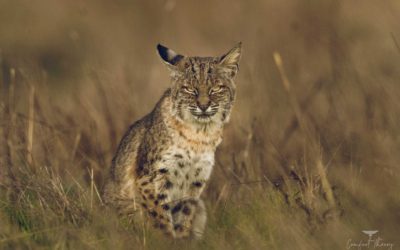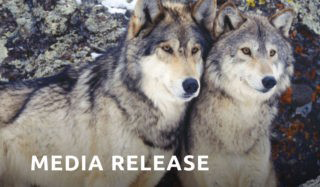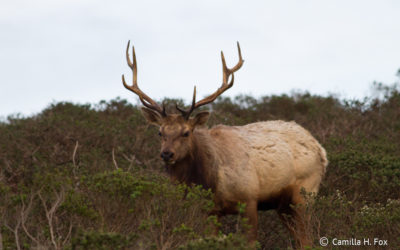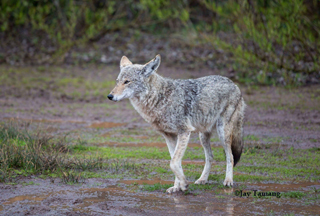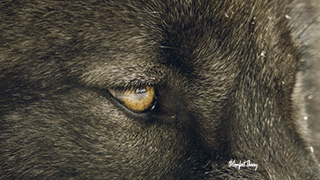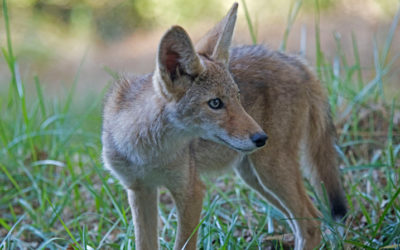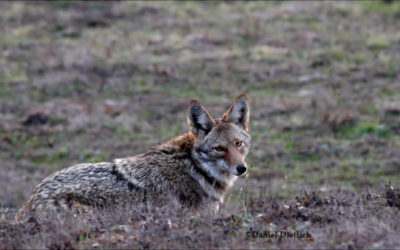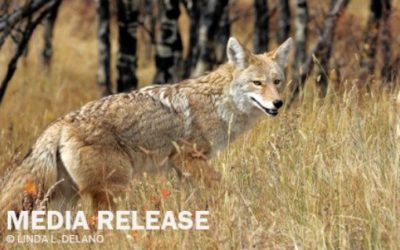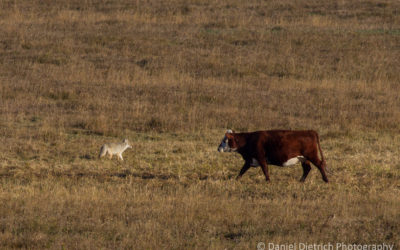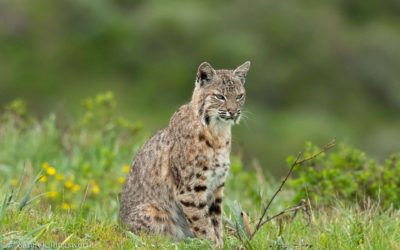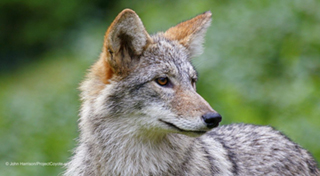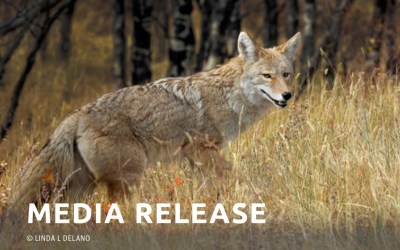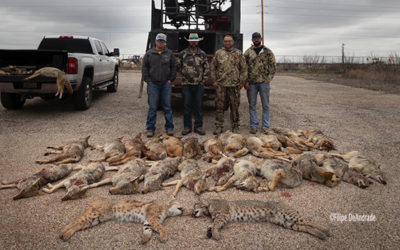Wildlife-killing contests in crosshairs
An effort is under way to bring an end to the wholesale killing of animals simply for points. Most people are unaware of a largely underground practice known as wildlife-killing contests. Michelle Lute with the group Project Coyote says participants compete to kill the most, the largest or the smallest animals for cash, belt buckles or other prizes. She says the practice does not align with widely accepted hunting ethics or values around how wildlife should be treated.
Killing wildlife to see who wins
Would you like to earn money and prizes by killing coyotes, foxes, cougars, bobcats, wolves, raccoons, squirrels, crows, rattlesnakes, rabbits, prairie dogs, woodchucks or skunks? If so, you can enter any of the thousands of wildlife-killing contests permitted and sometimes promoted by 44 state game and fish agencies. Such contests are legal in all Western states save California, Washington, Arizona and Colorado.
New Campaign Brings Awareness to Wildlife Killing Contests in Wyoming
Cody, WY — Starting today, drivers traveling from Cody to Yellowstone National Park will see a large billboard featuring a captivating wolf and a call to action to “End Wildlife Killing Contests.”
The battle over Point Reyes’ tule elk
Point Reyes sits at the western edge of Marin County, California, a pick-axe shaped peninsula that juts between the pounding waves of the Pacific. It’s a landscape of stark beauty; a patchwork of windswept headlands, broad leeward bays, wildflower-strewn meadows, and dripping evergreen forest. State and federal agencies list more than a hundred plant and animal species within the park as threatened or endangered, among them the California red-legged frog, western snowy plover, and coho salmon. This natural richness draws around 2 million visitors a year.
Reservoir Dogs: Coyotes find a home amid Sunset solar panels
When the sun obliges, the view from the south end of Sunset Reservoir on 26th Avenue and Quintara offers a particularly American sparkle. The blue Pacific gleams to the west, the Golden Gate Bridge glows red to the north, and over San Francisco’s largest reservoir glitters, white-hot, a solar field of 24,000 photovoltaic panels. On a recent Saturday, though, a small blur smudged Old Glory. And then the smudge moved, trotting with a lope that most San Franciscans have come to recognize. In yet another feat of amazing urban adaptation for this animal, a pair of coyotes have chosen to den on an 11-acre concrete waterbed, tucked under five annual megawatts’ worth of crackling solar energy in the heart of San Francisco’s Sunset District. Depending on whom you ask, their presence is to be feared, ignored, respected, or celebrated.
Guest Opinion: Joanna Lambert: Understanding wolves in Colorado
Over 50,000 years ago, in the vast expanse of glaciated Eurasia, modern humans were just one of many species scraping out a living and competing for prey. At that time, we would have been contending with many large predators – cave bears, saber-toothed cats, hyena, cave lion. And wolves.
The Indefensible Violence of Wildlife Killing Contests
Wildlife Killing Contests is—as intended—extremely difficult to watch. The recently released twenty-five-minute documentary, produced by Filipe DeAndrade and Brian Moghari in partnership with Project Coyote, contains graphic footage of animals being callously slain for entertainment and prize money, only to be added to piles of carcasses used for vain photo opportunities. As gruesome and stomach-turning as this footage is, the most sickening part is the simple fact that wildlife killing contests remain legal in over forty states, including across public lands.
It’s time to end ineffective and inhumane wildlife-killing contests
The Nevada Board of Wildlife Commissioners did the right thing recently in directing staff to draft a regulation that would ban wildlife-killing contests in the state.
Living with coyotes at Lake Tahoe
Living in a town so intertwined with nature allows residents to hike desolate trails, ski wide open slopes and swim in crystal clear waters. With the privilege to reside in the wilderness comes the responsibility of sharing with non-human inhabitants.
New billboard takes aim at wildlife hunting contests
Maryland to Become Eighth State to Ban Cruel Wildlife Killing Contests
Washington, DC —The Animal Welfare Institute and Project Coyote commend the Maryland legislature for passing a bill today banning wildlife killing contests that target foxes, coyotes, and raccoons. Once the bill is signed by Gov. Larry Hogan, Maryland will become the eighth state in the country to prohibit these cruel events.
Billboards Opposing Wildlife Killing Contests Spreading Across Wisconsin
Madison, WI — Starting this week, drivers across Wisconsin will see large and colorful billboards daylighting wildlife killing contests that occur in the state.
Farming is possible without killing coyotes
As a scientist advocating for evidence-based decision-making, I’m doing everything I can to promote Roxy’s Law, Senate Bill 32, to ban public lands trapping, snaring and poisoning in New Mexico.
Country Cat, City Cat
As a Marin County-based conservation photographer and wildlife educator, I spend many hours observing wildlife. Bobcats are without question my favorite species to watch and photograph.
Nevada regulators latest to take aim at controversial coyote-killing contests
MEDIA RELEASE: Milestone moment for New Mexico’s animals
SANTA FE, N.M.—Last night, by a vote of 35-34, the New Mexico House of Representatives passed Senate Bill (SB) 32, the Wildlife Conservation and Public Safety Act, aka “Roxy’s Law,” sponsored by Senator Bobby Gonzales (D-Ranchos de Taos) and Senator Brenda McKenna (D-Corrales) in the Senate and Representative Matthew McQueen (D-Galisteo) and Representative Christine Chandler (D-Los Alamos).
“ROXY’S LAW” BILL TO OUTLAW TRAPS, SNARES, AND WILDLIFE POISONS ON PUBLIC LAND PASSES SENATE JUDICIARY COMMITTEE
SANTA FE, N.M.—Today Senate Bill 32, the Wildlife Conservation and Public Safety Act a.k.a. “Roxy’s Law,” passed the Senate Judiciary Committee by a vote of 5 to 1. Senate Bill 32 makes important strides towards protecting all those who enjoy the outdoors, human and animals, by prohibiting traps, snares, and poisons on public lands (with a few important exemptions).
WHAT KIND OF CONTEST IS THIS?
Sport hunting is one of the most controversial topics we cover on the Animals desk. It’s an emotional issue that inevitably leads to debates about ethics, sustainability, sportsmanship, and even sovereignty. Today, I’m going to turn the newsletter over to National Geographic Explorer Filipe DeAndrade, whose new film takes a deep dive into one of the most controversial types of hunting of all: wildlife killing contests.

